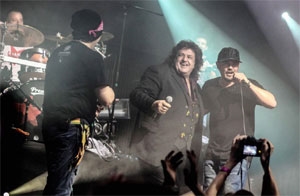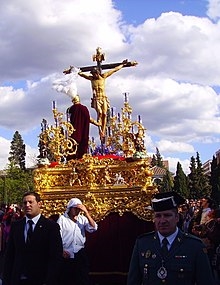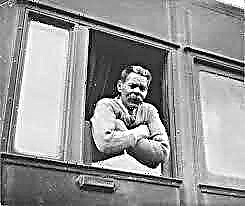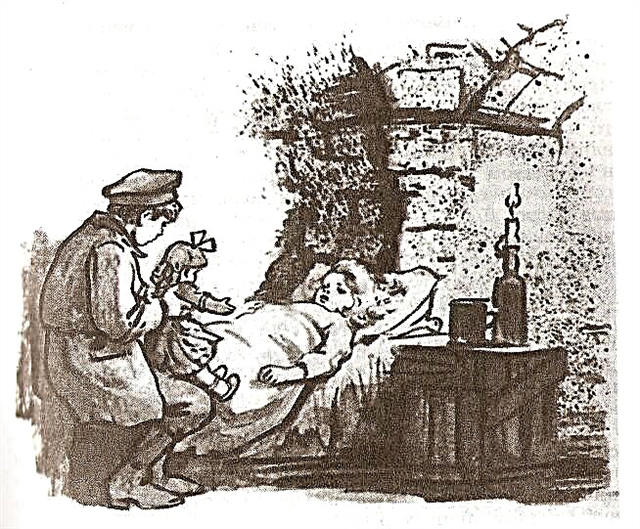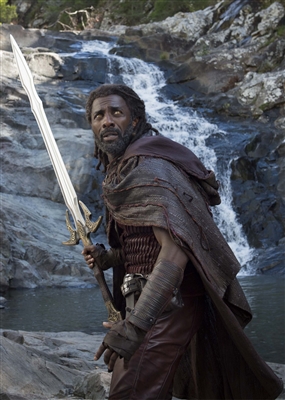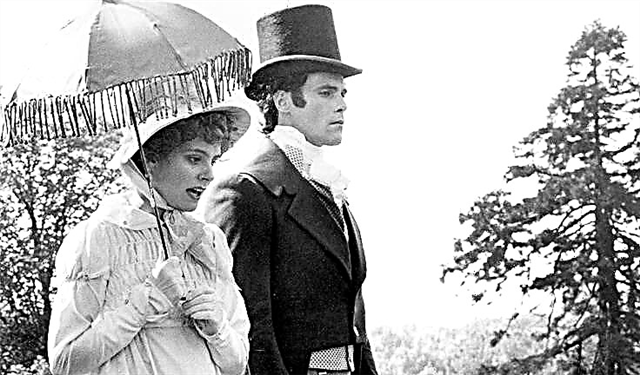Poem A.A. The “On the Railroad” block is full of artistic details that make the reader shudder. The cinematic credibility with which each stanza is written visually paints a tragic picture in front of us.
History of creation
"On the Railroad" was completed on June 14, 1910 and became part of the "Homeland" cycle.
At this time, Blok was rereading the Resurrection of Leo Tolstoy. The plot of the poem has an intertextual connection with the story of Nekhlyudov and Katyusha Maslova. Here you can see a reference to another, no less famous novel, "Anna Karenina." However, it cannot be said that “On the Railroad” is a poetic imitation. The author uses new characters, saturating them with a blocky sound.
The plan is also based on a real case, which Blok witnessed. Passing by the railway station, he saw through the train window a poisoned teenage girl and local inhabitants, standing at a distance and looking with petty curiosity. Block saw everything from the inside. He could not help speaking out in his heart.
As you know, the poet was very attentive and alien to indifference. Such a conclusion can be drawn from the memoirs of his contemporaries, from what was created by Blok, for example, such an article as “Irony”, from his diaries and letters. The author always reacted sharply to any slightest change in the world order. His sensitive heart, having heard the music of the revolution, was not able to pretend to be a mechanical engine.
For the Block, human life is the life of the whole country. In the poem “On the Railroad” the identification of the existence of an individual person and the fate of the whole Motherland is clearly felt.
Genre, direction, size
The genre of the poem “On the Railroad” is a lyrical work. It reflected the features of the symbolist trend.
First of all, it should be noted the ambiguity of each image that appears in the work, the musicality of the syllable and the philosophical sound of the central theme. At the end of this poem, a symbolist view of life realities from the point of view of eternity is clearly traced. Musicality, expressed not only by poetic devices, but also concentrated in the internal energy “On the Railroad”, also makes this work related to symbolism.
The block uses an ambiguous poetic size: the alternation of five- and four-foot iamba. “On the Railroad” consists of nine quatrains. The rhyme type is also special, the first and third lines of the quatrains are rhymed dactylically. The second and fourth have a female clause. Thus, an internal rhythm is created, giving the poem a wave-like intonation sound.
Composition
The composition “On the Railroad” is circular. The poem begins with the image of a dead girl lying “under the embankment, in the moat uncut,” and ends with a return to the same image. Block uses a cinematic device, gradually moving the lens away from the main character to show her fate, and then again returning to the figure of an unhappy girl. It creates the reader a sense of involvement in what is happening. The existence of an individual heroine becomes an impulse in order to think about the fate of the motherland.
The ring composition allows Blok to create an image of infinity: the end is the beginning, and the beginning is the end. However, the last lines leave hope for getting rid of this rock. The dead heroine is described as if alive: “Do not come up to her with questions, / you don’t care, but she’s enough: / With love, dirt or wheels / She is crushed - everything hurts.” One gets the feeling that she can still hear rumors and bustle around, still sees the figures approaching her, still distinguishes between the faces of curious onlookers. The dead man was discharged, as if existing between the world of the valley and the highlands. This duality is that the flesh belongs to the earth, and the soul rushes into the sky, shown dead, but still presence.
Images and Symbols
Symbols are hidden in the poem, absorbing the essence of the era.
- For example, in this quatrain: “The wagons followed the usual line, / trembled and creaked; / Silent yellow and blue; / Cried and sang in green ...” - the poet allegorically means social inequality and generally the polarity of perception of Russian reality of that time by different classes. And at the same time he observes a dull indifference to the fate of man, both the upper and lower layers. Someone is hidden behind the mask of an aristocrat, someone is behind the illusion of the breadth of his own soul. In any case, all are the same in one thing: no one notices human expectation, no one holds out his hands. However, Blok does not reproach people, he only asks them to be more sensitive at least to her death, since they could not come to life. Blok wrote this: “Heart, pour out tears of pity for everything and remember that you cannot judge anyone ...”
- The unfortunate fate of the heroine can be viewed from a symbolist point of view. The image of a girl “in a bandana, on an abandoned braid” - personification of Russia. The “Walk of Walk”, exciting expectations in the hopes that a miracle will happen now - and life will become easier, and everything will change. It seems to me that Blok wanted to attach a global meaning to this symbol - the eternal expectations of a better life by the Russian people.
- Another girl’s fate is easily guessed symbol - a difficult share of a Russian woman. Endless expectations of happiness, the keys to which are thrown deep into the water and long eaten by fish, according to the heroine of the poem Nekrasov.
- Image of the railway Is a symbol of the path. People rush on the train, no one knows where, not noticing how the entire space of the country is plunged into deadly anguish. The "greedy eyes" that the girl throws through the windows of the cars, hoping for a cordial response - an attempt to stop the train of that era and be saved by love.
- Lyrical hero refers to a girl with deep sympathy and compassion. First of all, he sees Russia in the face of the girl. One gets the feeling that he passes through himself all the pain of this unfortunate fate, realizing his helplessness before the tragedy.
Topics
The main theme of the poem is the theme of loneliness in the crowd, the tragic fate of a man who was eager for love and met only by the cold of outer space. The theme of human indifference is woven into the outline of the plot as a result of general blindness. The inability to forget oneself and discern one's neighbor, the inability to get out of a racing car where it is unknown where to live and just stop for a moment, look around, notice, listen, become sensitive. The closeness and individuality of each creates an all-consuming ice void, into which the whole country is immersed. The block draws a parallel between the destinies of a particular heroine and Russia, showing how lonely and dilapidated the Motherland seems to him, enduring so much pain and not finding a sensitive soul on its own open spaces.
The block also raises the theme of an unfulfilled dream. The sound “On the Railroad” is tragic precisely by this victory of life realities over dreams.
Problems
The problems of “On the Railroad” are multifaceted: here is the path of Russia, the fate of the Russian woman, and the irresistibility of rock.
There is not a single rhetorical question in the poem, however, interrogative intonation is palpable in the subtext of the work. The poet reflects on the fate of his own country, trying to understand where and why everything around is moving. The feeling of external fuss and inner loneliness is created due to the station surroundings. The pettiness of a man against the backdrop of a vast space rushing off somewhere by trains occupied by crowds of people. The problem of hopelessness and hopelessness is considered on the example of a single human fate.
Idea
The main idea that Block puts into his creation is also ambiguous. Each symbol is fraught with more than one meaning.
The main idea is to comprehend the path of the Motherland. The lyrical hero is not indifferent to what is happening. He is trying to encourage people to be sensitive and careful. If we consider the fate of the heroine as a symbol of the fate of Russia, then we can say that the central idea of this poem is to listen to the already dying country. This is a kind of foreboding of the approaching events of that era. What will be said in the article “Intelligentsia and Revolution” eight years later is already reflected in this work.
The important thing is that the lyrical hero is also among those who rushed by, and only the sight of death excites his whole being. In fact, all these artistic details (“decorous walk”, “more tender blush, steeper curl”, etc.) are recreated only in his imagination. Seeing the result of this sad story, he seems to flip back to realize the mistake, to feel all the pain experienced by the main character.
Means of artistic expression
The means of artistic expression found in this poem are also multifaceted. Here and epithets “with a steady look”, “greedy eyes”, etc., and the comparison “like a living one”, and the antithesis “Silent yellow and blue; / In green they cried and sang”.
The unit also uses the soundtrack “The cars went the usual way, trembled and creaked” to more accurately convey the station atmosphere.
Anafora in the sixth quatrain “Slid a gentle smile on her, / Slid - and the train ran off into the distance ...” is necessary here for expressiveness and emphasizing the fleetingness of what is happening. In the penultimate quatrain there is a rhetorical exclamation: “Why, my heart has long been taken out!”, Which conveys the emotional tension of the poem. In the same quatrain, Blok again uses the anaphora: “There are so many nods given, / So many greedy eyes are thrown”, which, first of all, creates a pumping intonation.
Block also often uses a dash in the middle of the line, thus creating a long caesura that focuses on what has been said and becomes an impulse of internal tension: “I slipped and the train ran off into the distance”, “You don’t care, but it’s enough”, “... il wheels / She crushed - everything hurts. "



